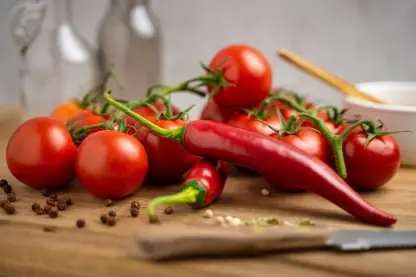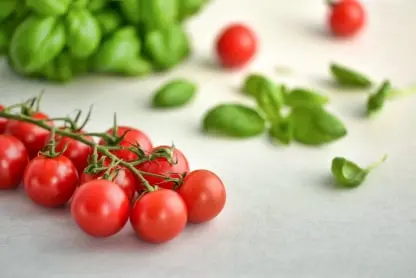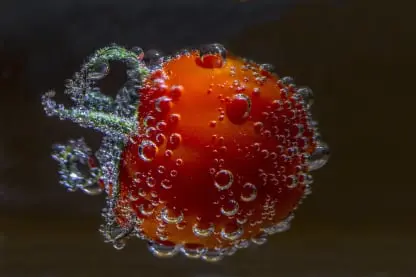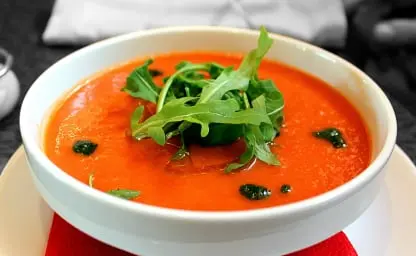Tomato Food Safety app with AI Food Safety:
Tomato Food Safety app with AI quality tests for packing and processing fresh tomato. Increase tomato quality, Slash waste, Slash QC testing costs, increase Food Safety consistency. Slash quality negotiation time with suppliers and customers.

Tomato Food Safety during production
View app Specifications.
Recent foodborne illness outbreaks associated with tomatoes indicate the storage and handling practices of tomatoes and other fresh produce in food service operations and retail food stores must be re-examined. The FDA's Produce Safety Action Plan (6) recommended adding language to the Food Code to address produce safety at retail. The Conference for Food Protection (CFP) in 2006 recommended to FDA (2) to incorporate "cut tomatoes" into the definition of potentially hazardous food (time/temperature control for safety food) in the FDA Food Code (5).

Daily Tomato packhouse hygiene checklist
A potentially hazardous food (PHF) or time/temperature control for safety food (TCS food) is defined in terms of whether or not it requires time/temperature control for safety to limit pathogen growth or toxin formation. The term does not include foods that do not support growth whether or not they contain a pathogenic microorganism or chemical or physical food safety hazard. The progressive growth of all foodborne pathogens is considered whether slow or rapid. This definition takes into consideration a food's acidity (pH), water activity (aw), or combination of pH and aw interaction, heat treatment, and packaging for a relatively simple determination of whether the food requires time/temperature control for safety. (See Attachment A)

Tomato Food safety
When pH and/or aw are not sufficient to control pathogen growth and/or toxin formation in the food, refrigeration may be the only viable alternative without changing the character of the food. Internal FDA research (see Attachment B) and other published references (1, 7, 9, 10, 11) have shown that the pH (4.2 - 4.8), aw (0.99) and available nutrients of cut fresh tomatoes support the growth of Salmonella spp., the pathogen of concern for cut fresh tomatoes. While the pH and aw of various varieties of tomato may vary somewhat (1) these values are still within the growth range of Salmonella. Therefore, cut tomatoes are considered a PHF (TCS food) because they support the growth of foodborne pathogens.

Tomato Supplier Food Safety
Historically, most fruits and vegetables have been considered non-PHF (non-TCS food) unless they were epidemiologically implicated in foodborne outbreaks. Since 1990, at least 12 large, multi-state foodborne outbreaks as well as small local outbreaks have been associated with different varieties of tomatoes (2, 3, 6). From 1998 - 2006, outbreaks reported to FDA associated with tomatoes made up 17% of the produce-related outbreaks. Salmonella has been the pathogen of concern most often associated with tomato outbreaks. Natural reservoirs for Salmonella spp. include birds, amphibians, reptiles, soil, pond sediment as well as infected and recovering human beings. Salmonella is viable in the environment (in soil, water, etc.) for months (5).